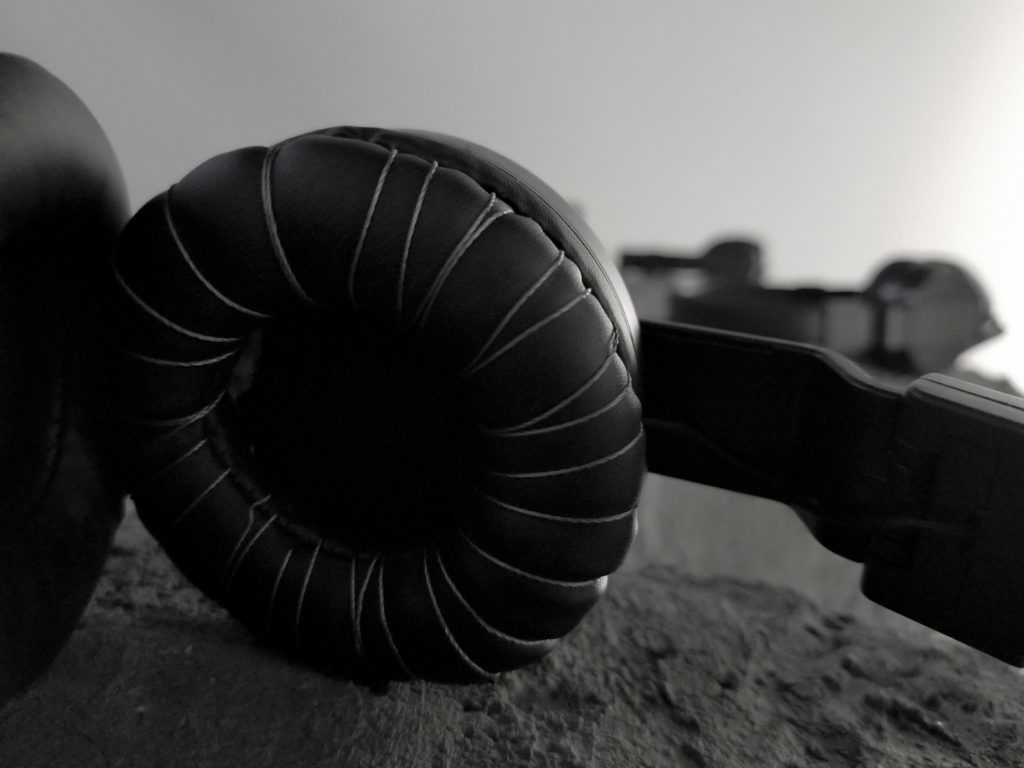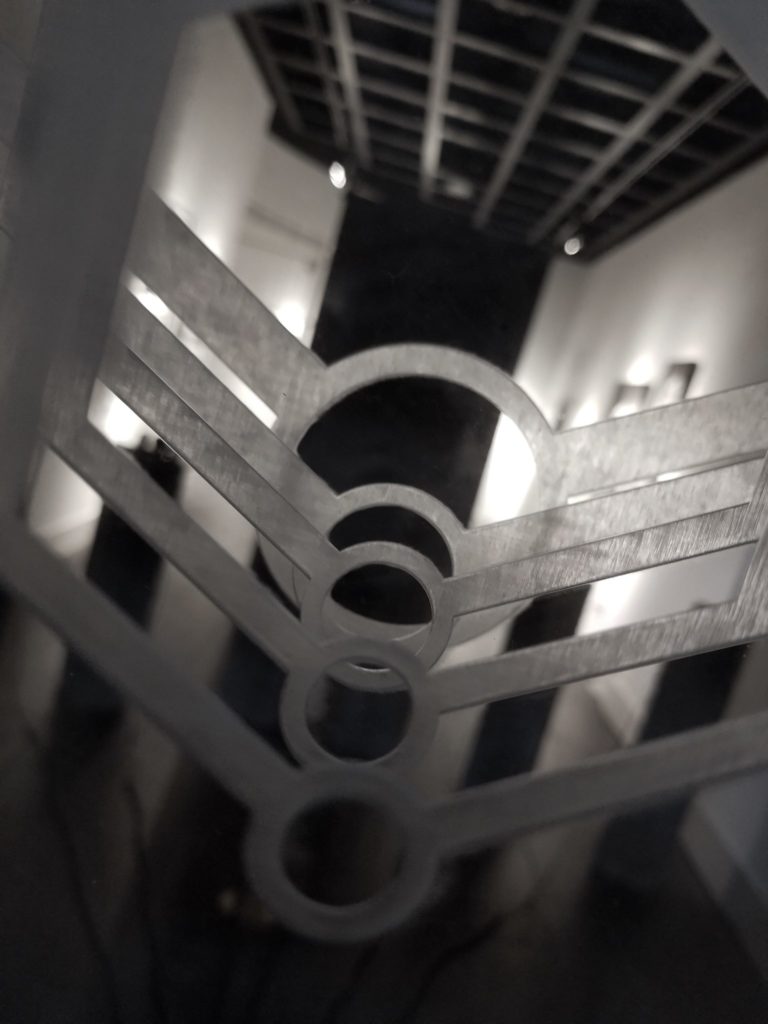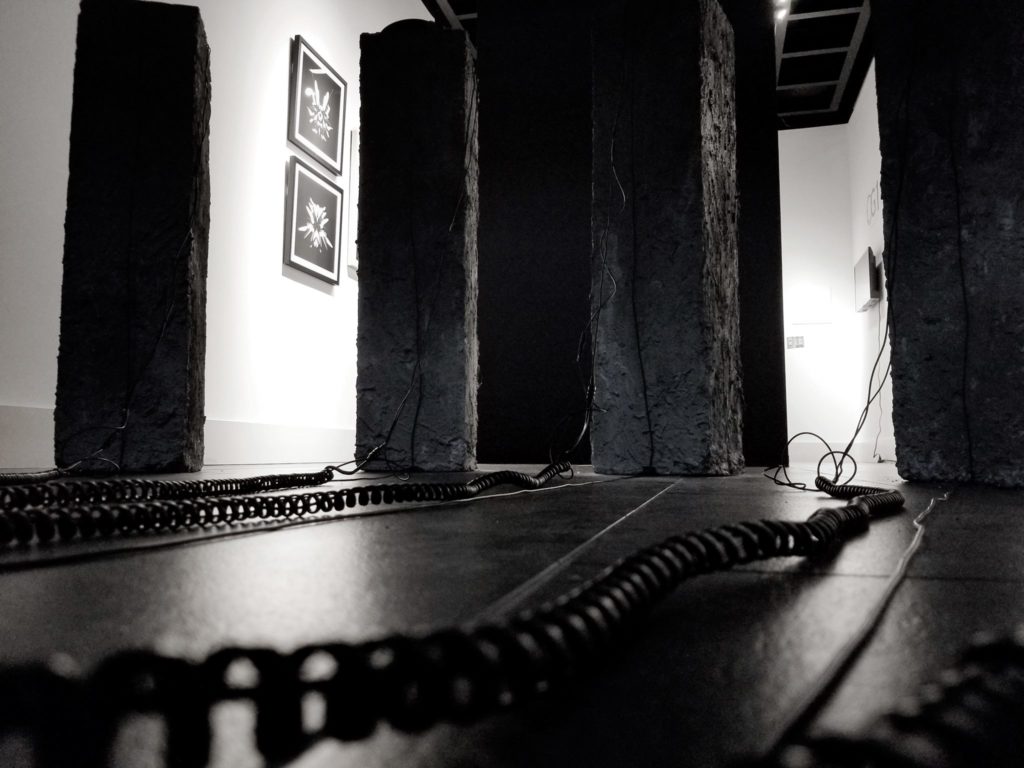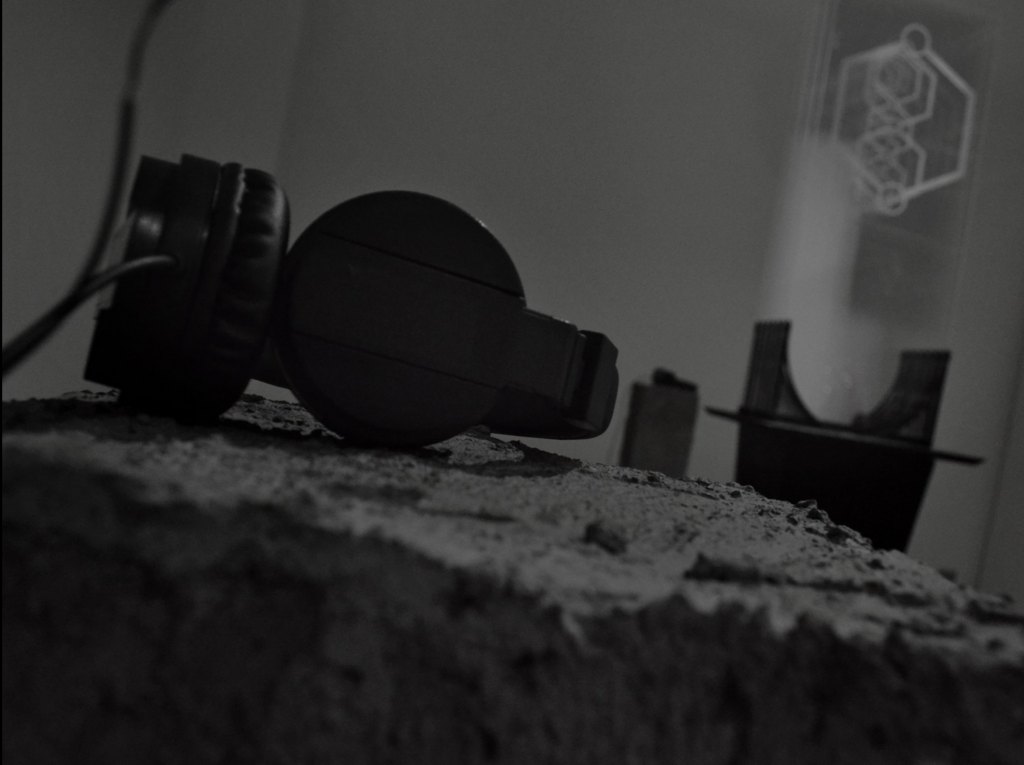Conduit is an interactive sound installation that explores psychoacoustics through layered harmonic frequencies. Participants are presented with 6 pedestals, each activating a different frequency through conductive material. Each participant chooses if the sound which they control will be included or omitted from the combined complex tone which each person hears collectively through individual headphones.
The pedestals surround a central light sculpture of 6 sequenced panels. Each frequency, when activated, lights up a single panel etched with a symbol that corresponds to its relative wavelength in relation to the other frequencies and the fundamental. When each panel is lit, one can observe the layered symbols on each panel, illustrating where nodes of the different sine wave frequencies would line up.
Each frequency is modulated to at a rate which reinforces the harmonic relationship. This modulation creates a tone that alternates between being fully present and fully absent, allowing the listener to become more aware of the presence of each individual tone . When several tones are active, participants can challenge their minds to discern and focus on each of the single tones, one at a time, separating them from the combined, complex tone.
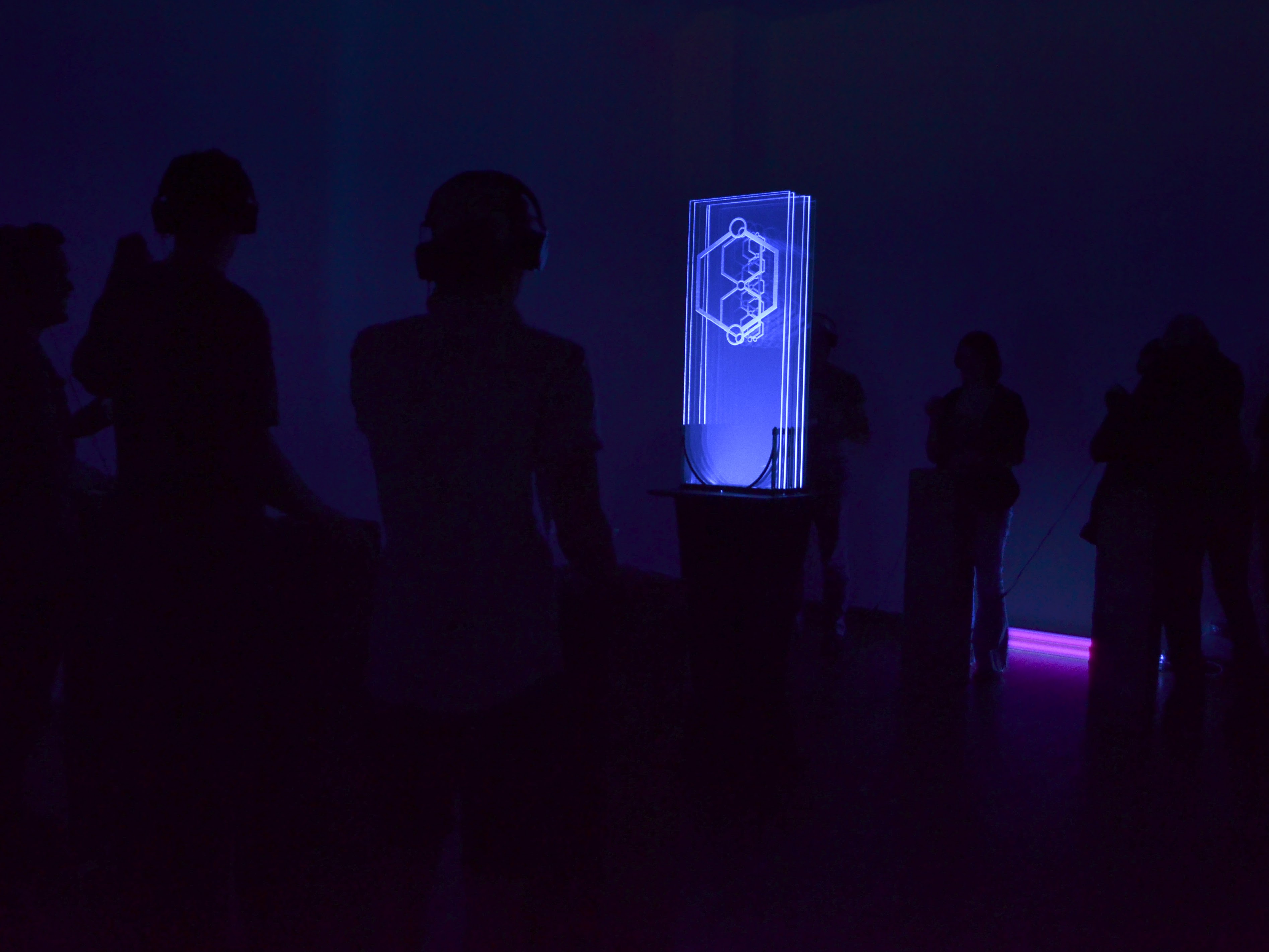
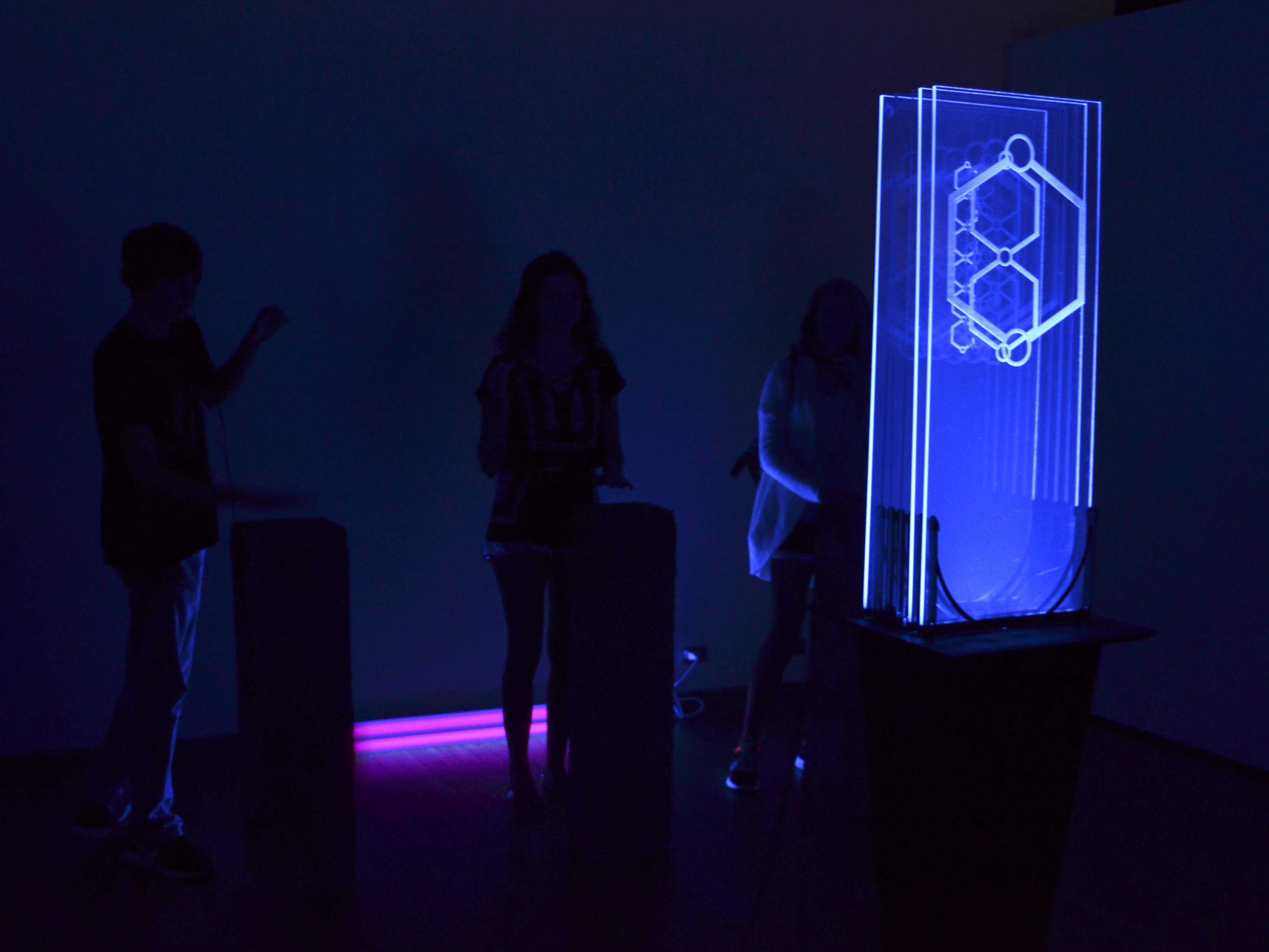
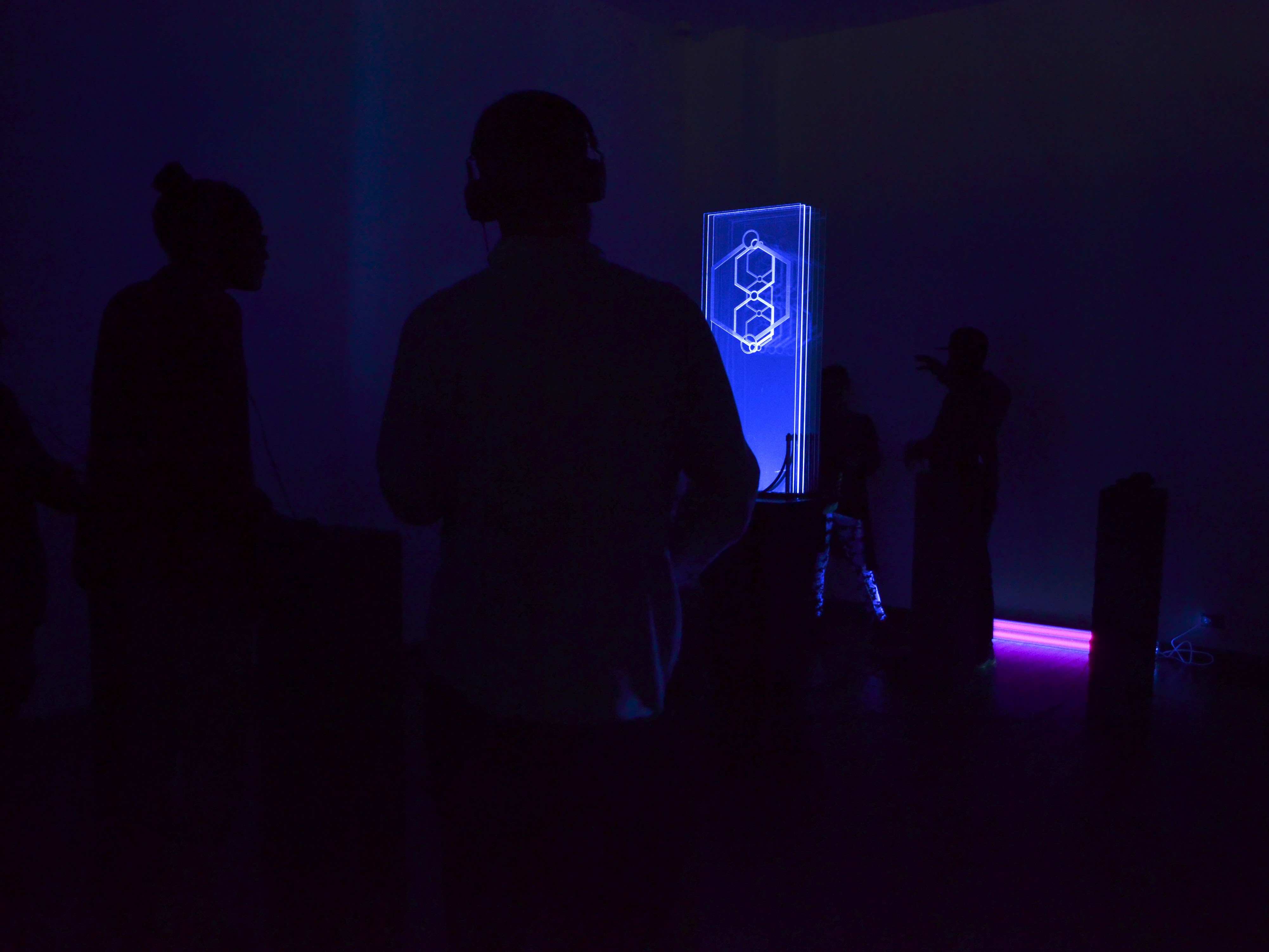
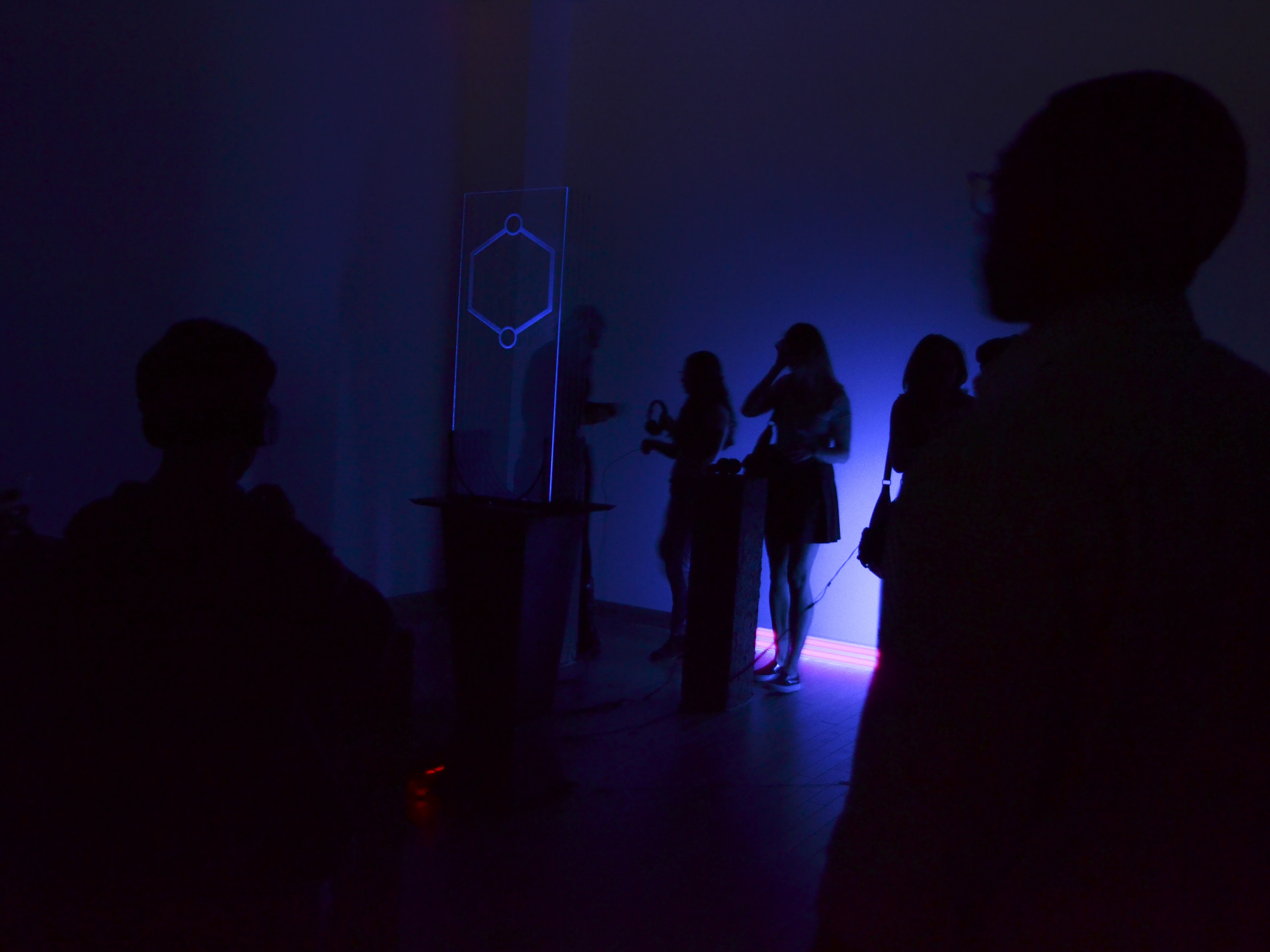
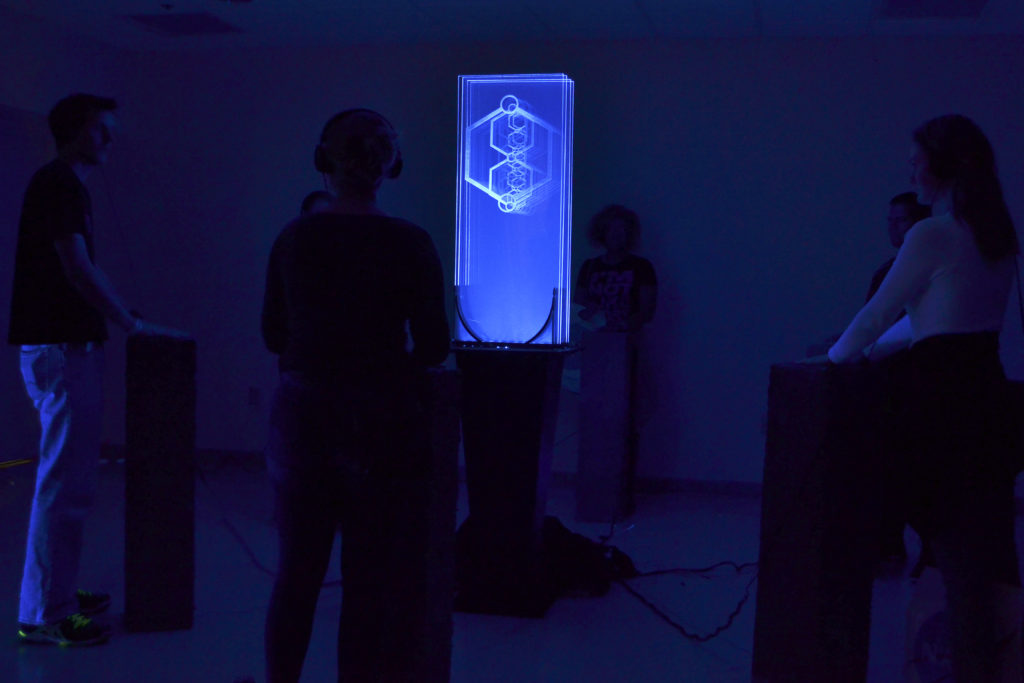


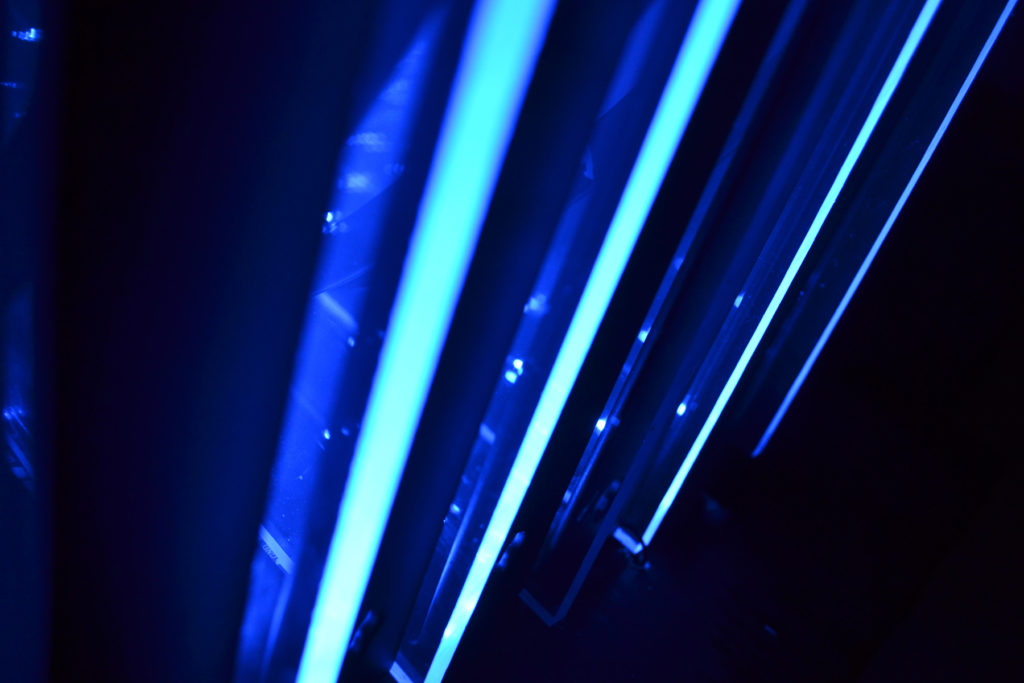
For CONDUIT, I was very interested in the mathematics behind music and learning more about different musical systems and how these systems were first developed and have changed over time. There was an underlying theme in the back of my mind of an alternate world where humans worshipped sound, instead of gods. This theme is what lead to the overall experience of CONDUIT being a collective experience, with people standing around the central physical structure in an almost ritualistic arrangement. As people placed their hands on each of the pedestals, one of 6 harmonic frequencies unique to each pedestal would play through the headphones, audible to everyone. For each harmonic frequency that was activated, a tall panel in the central structure would light up with a symbol corresponding to that frequency’s mathematical relationship in the harmonic series. Together as a group, the six people decided the overall sound of the experience – holding their hand in place would create a continuous modulated sound, or they could create music by touching the pedestal in discrete intervals to create individual notes. When multiple modulated frequencies played at the same time, people could try and identify and separate each of the tones in their mind through active listening. Listening to the tones for an extended period of time would often have a hypnotic effect on the listener, especially when they were simultaneously focused on the illuminated panels in front of them.
I had made each of the 200 lb pedestals myself a month before the first installation, and even though they were completely set and had been dry to the touch for weeks, there was still some residual moisture deep inside that was enough to make them conductive. I placed a wire at the base of each pedestal, and another wire was connected to conductive thread that was wrapped around the earpieces for each pair of headphones. When a person wears the headphones, the conductive thread makes contact with their body, and, when they then touched the pedestal (which was also conductive) they completed a circuit which controlled the activation of the sounds and LED’s that illuminated the panels.
All of the signal processing was controlled in Max/MPS using a patch that I wrote to trigger the sounds and communicate with Processing, which controlled all the triggers for each set of addressable LED’s.
